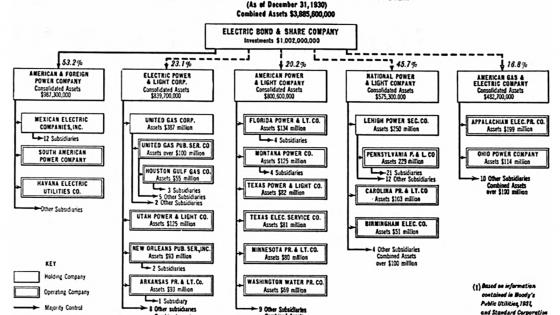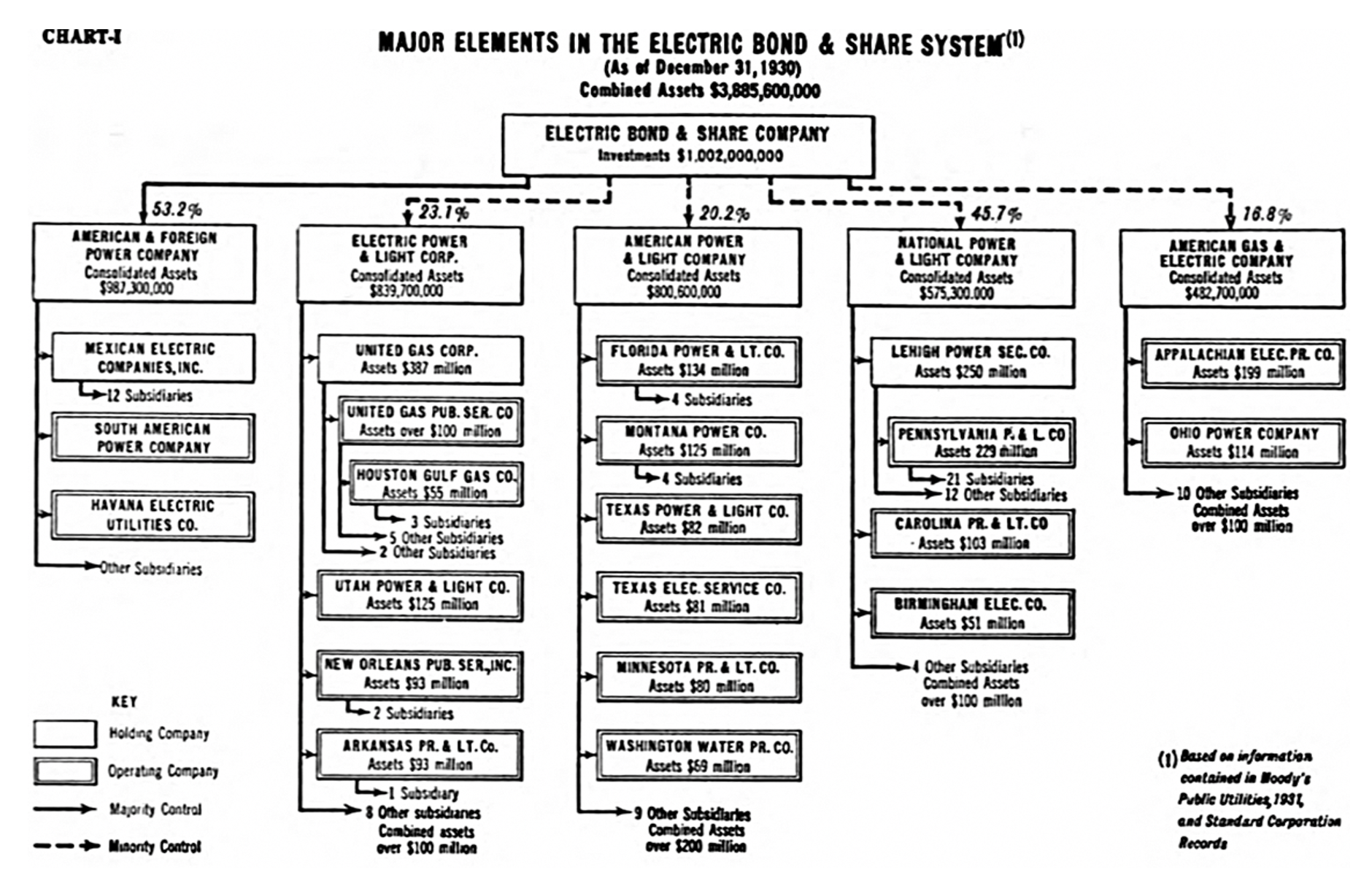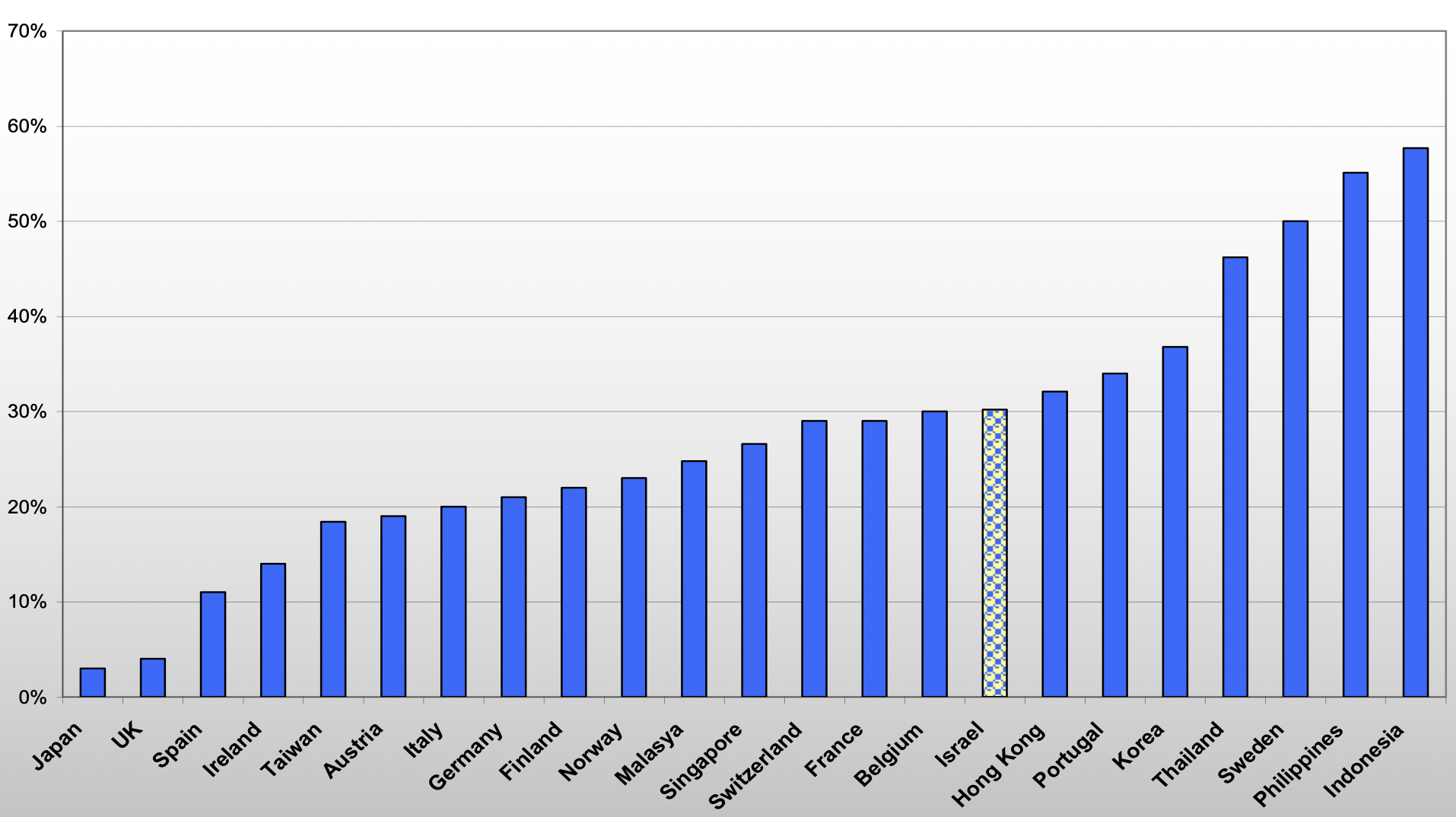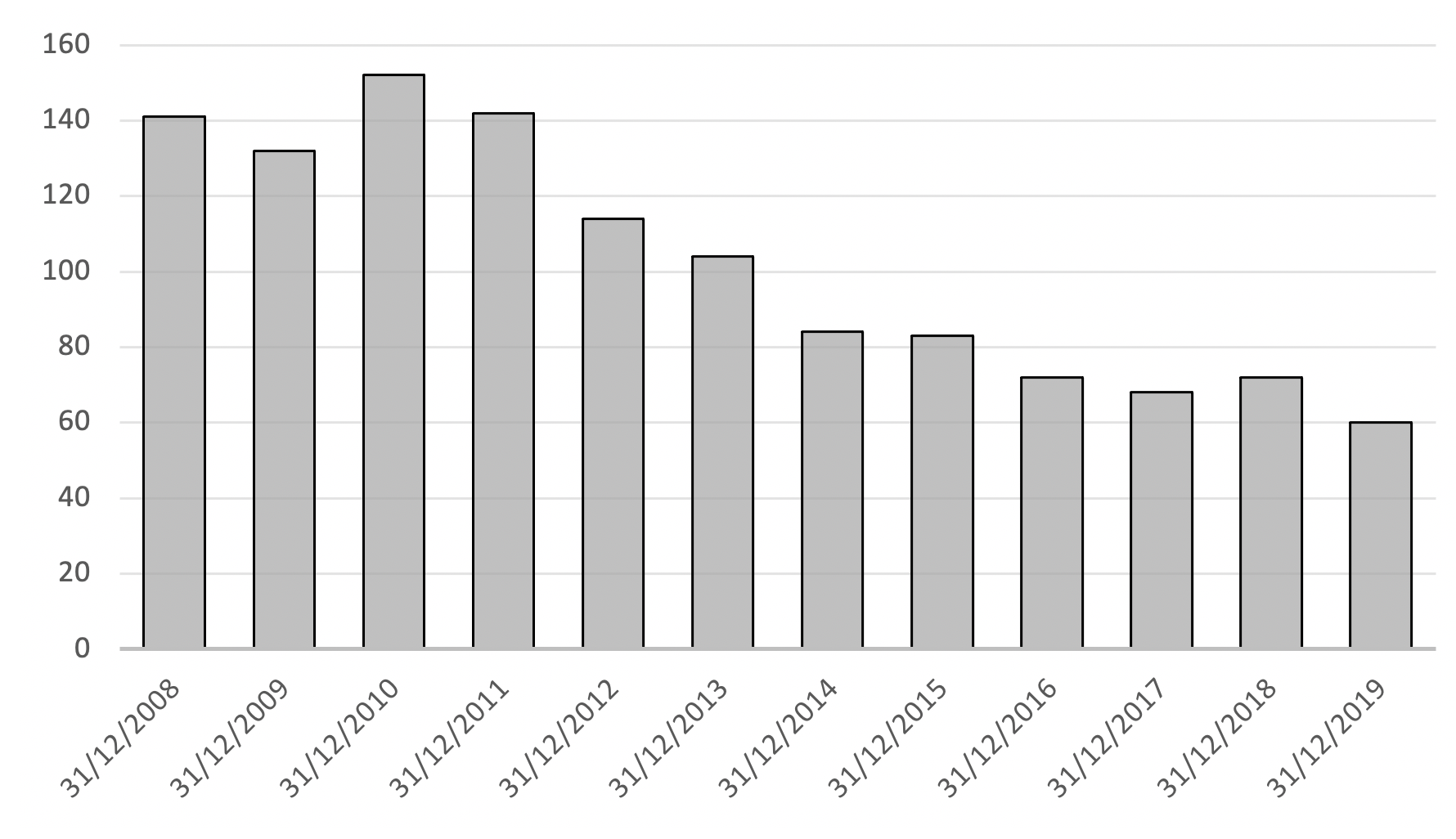Large business entities are often perceived as valuable players in the economy and the product of bold entrepreneurship and disruptive innovation. Nevertheless, they are sometimes regarded as too large, wielding excessive economic and political power that allows them to impede competition and shape regulation in their favour. This process may lead governments to introduce regulatory reforms aimed at breaking up large businesses or curbing their influence. Recent calls to restrain the tech giants (e.g. Gersbach 2019) are a present-day example of this process: “…companies that once were scrappy, underdog startups that challenged the status quo have become the kinds of monopolies we last saw in the era of oil barons and railroad tycoons."1 But, what are the most appropriate regulatory tools to address the influence of these companies? This question remains open.
In a recent paper (Hamdani et al. 2020), we discuss historical and cross-country evidence on government policy toward a particular type of large corporate entity – pyramidal business groups. We focus on four countries that adopted measures to dismantle or limit the power of pyramids: the US in the 1930s, Japan under American occupation, Korea in the 1990s, and Israel in the last decade. We emphasise the role of novel (not antitrust-based) regulatory measures in restraining or dissolving pyramidal groups.
Business groups are ubiquitous around the world. Control-magnifying, pyramidal groups – tiered structures where an apex firm controls multiple tiers of subsidiaries – let a small number of powerful individuals or families (e.g. the Lee, Tata, and Wallenberg families) dominate many Asian, European and Latin American economies. These individuals or families need only have a large enough equity stake to control the apex firm; the vertical control structure of the group – the separation between control and cash flow rights – magnifies this into control over large corporate empires, far exceeding their equity stake in those companies.
Research has explored different aspects of business groups (Khanna and Yafeh 2007). Strategy scholars view the prevalence of diversified groups in emerging economies as a response to institutional voids – underdeveloped financial, labour or intermediate goods markets, and inefficient or corrupt judicial systems – that firms in business groups can bypass. This effect is arguably important in early stages of development, but less so in developed economies. By contrast, the downsides of business groups persist long after the benefits associated with them are gone. Legal and finance researchers emphasise the resource misallocation and corporate governance problems associated with the separation of ownership and control in pyramidal groups. Furthermore, excessive political power and monopoly power enable ‘entrenchment’ by groups, rendering them socially undesirable in advanced stages of economic development.2
We do not address the question of whether business groups (or other large corporate entities) should be prohibited or otherwise become the target of government regulation. Rather, taking as given the decision to use regulatory measures to target business groups, we explore the political circumstances, regulatory strategies, and market conditions that allow governments to succeed in limiting their economic power.
The US
The first example of policy targeting business groups is the US during the New Deal (Kandel et al. 2019). Pyramidal business groups, developed in the early decades of the 20th century, wielded substantial economic and political power and controlled over half of all non-financial corporate assets in the US in the 1930s. During the Great Depression, groups – a major public concern – were perceived as a likely threat to capitalism and democracy. Roosevelt regarded standard antitrust enforcement as insufficient for the task at hand.3 Instead, the extreme political and economic circumstances of the period enabled him to introduce an array of specifically designed structural and other measures to reduce the concentration of economic power, including outright restrictions on the number of levels in public utilities pyramids, tax incentives to downsize groups, and restrictions on the scope of activities of holding companies (designed to limit their economic power rather than reduce minority shareholder expropriation). These reforms, applied consistently for more than a decade, eventually eroded the US pyramids, which had largely disappeared from the landscape of corporate America by 1950 (Figures 1A and 1B).
Figure 1A US business groups and group affiliates, 1926-1950
Source: Kandel et al. (2019).
Note: Controlled groups have a family or an individual controlling the apex firm; in widely held groups, the apex firm is diffusely held.
Figure 1B An example of a US pyramid: Electric Bond and Share, 1930
Source: Berle and Means (1932).
Japan
Japanese pyramidal groups – zaibatsu – came to dominate the modern sectors of the economy in the late nineteenth century and especially in the years preceding WWII. While these groups were perceived as agents of economic development in the early stages of Japan’s industrialisation, the extreme economic power of family-controlled pyramids made the dissolution of zaibatsu one of the major policy objectives of the American occupation authorities, who regarded the groups not only as beneficiaries of the war, but also as one of the causes of anticompetitive conduct, social inequality, and the rise of militarism. The measures used to dissolve them were extreme. More than one third of all assets in the Japan changed hands by decree, as the occupation authorities confiscated the shares held by group member firms and their controlling families. All incumbent managers were removed and prohibited from holding executive positions. An explicit attempt was made to generate a dispersed ownership structure by distributing the ex-zaibatsu shares to company employees and residents of the communities where zaibatsu-owned plants were located. The results were mixed: holding companies disappeared from the landscape of corporate ownership, as did the controlling families of the groups. However, the dispersed ownership generated by decree through the occupation reforms proved short lived. Cross-holdings of shares by corporations and banks emerged as a uniquely Japanese form of corporate ownership – the keiretsu (Figure 2). One explanation for this result is that dispersed corporate ownership cannot be imposed exogenously without supporting market institutions. Another explanation may be that financial institutions did not become the target of reforms and could thus form the core of Japan's postwar corporate ownership structure.4
Figure 2 Distribution of share ownership in Japan, 1950-1985
Source: Aoki (1998).
Korea
In Korea, much like pre-war Japan, pyramidal, family-controlled business groups known as chaebol were associated with the rapid industrialisation of the 1960s and 1970s, filling up institutional voids under the auspices of a developmental government. However, their expansion in the 1990s, often financed by subsidised loans from government-owned financial institutions, was perceived as one of the main reasons for the economic crisis of 1997-1998. The crisis changed the perception of chaebol from paragons of Korea’s rags to riches story to parasites associated with ‘reckless behaviour’ and ‘moral hazard’. Yet, the government did not adopt reforms to break up the large groups. Instead, the major policy tools used to regulate the chaebol were based on the premise that the groups’ opaque corporate governance had to change to make them less crisis-prone, transparent and accountable to minority shareholders and to the Korean public. Consequently, a series of corporate governance-focused reforms was introduced in the early 2000s. Perhaps because of the focus on corporate governance, or because of the lack of policy consistency over time,5 the largest groups, including Samsung and Hyundai, still dominate the Korean economy, and in fact over the last two decades they have increased in size both relative to GDP and relative to smaller groups (Figure 3).
Figure 3 The share of Korea’s ten largest groups in GDP, 2001-2018
Source: Korea Fair Trade Commission and the authors’ calculations
Note: Groups appear according to their rank, so, for example, the bar representing the second largest group may refer to different groups in different years; the 2008 data include major infrastructure groups which do not appear in other years.
Israel
Business groups in Israel emerged in the 1990s, when Israel was already a developed economy.6 The initially favourable attitude towards them changed around 2010-2011, against the backdrop of a high cost of living and a ‘social protest’ condemning the monopoly power of some group affiliates. Although Israel did not experience a political or economic crisis as the US, Japan and Korea did, the global financial crisis of 2008 precipitated the default of some group affiliates, raising concerns about money invested in their securities by pension funds. A government-appointed committee proposed in 2012 a set of regulatory measures designed to reduce the concentration of economic power in Israel:7 (i) limitations on the number of levels in pyramidal groups; (ii) prohibitions on large groups controlling both financial institutions and non-financial businesses; and (iii) changes to privatisation and other regulatory policies so that they would take into account considerations of economy-wide concentration of economic power and control.8 The reforms in Israel, applied consistently over nearly a decade, have not (yet?) resulted in the complete disappearance of pyramidal groups, but they have led to a sharp decline in their number and the number of pyramidal levels in them (Figures 4 and 5). Surviving groups are not only smaller today than in the past, but also less likely to interact with each other across multiple markets – a pro-competitive effect.
Figure 4 Concentration of economic power: Israel versus other countries
Source: Kosenko (2007).
Note: The calculation for Israel refers to 2005 with the denominator excluding cross-listed firms and Teva Pharmaceutical Industries which was gigantic, at the time.
Figure 5 The number of business groups in Israel (right axis), their share in total market cap (left axis) and the total number of group affiliates (bottom panel)
Source: Authors’ calculations
Note: The denominator is the market value of all firms listed on the Tel Aviv Stock Exchange, excluding the value of firms cross-listed on foreign stock markets.
Concluding remarks
We conclude that to successfully address concerns of arising from the concentration of economic power and curb the influence of large corporate entities, it is important to implement multiple regulatory tools which can address economy-wide (rather than industry-specific) economic power. Standard antitrust enforcement is unlikely to be adequate for restraining corporate entities whose activities span many industries. Corporate governance reforms cannot be a remedy for monopoly power and political clout associated with business groups. We also stress the importance of the political environment in which a reform takes place, not only in having a supportive public opinion but also in the ability of policymakers to consistently apply anti-big business policies over a long time period. Finally, the experience of Japan suggests that policies to curb the influence of business groups should be accompanied with structural measures to limit the power of financial institutions.
References
Aoki, M (1988), Information, Incentives and Bargaining in the Japanese Economy, Cambridge University Press.
Berle, A and G Means (1932), Modern Corporation and Private Property, Harcourt Brace & World.
Chang, S-J (2003), Financial Crisis and Transformation of Korean Business Groups: The Rise and Fall of Chaebols, Cambridge University Press.
Franks, J, C Mayer and H Miyajima (2016), “The Ownership of Japanese Corporations in the 20th Century,” Review of Financial Studies 27: 2580-2625.
Gersbach, H (2019), “A bit of democracy for the tech giants: Two ideas”, VoxEU.org, 18 October.
Hadley, E (1970), Antitrust in Japan, Princeton University Press.
Hamdani, A, K Kosenko and Y Yafeh (2020), “Regulatory Measures to Dismantle Pyramidal Business Groups: Evidence from the United States, Japan, Korea and Israel”, CEPR Discussion Paper No. 4927.
Kandel, E, K Kosenko, R Morck and Y Yafeh (2019), “The Great Pyramids of America: A Revised History of US Business Groups, Corporate Ownership and Regulation, 1926-1950,” Strategic Management Journal 40: 781-808.
Khanna, T and Y Yafeh (2007), “Business Groups in Emerging Markets: Paragons or Parasites?” Journal of Economic Literature 45: 331-373.
Kosenko, K (2007), “Evolution of Business groups in Israel: Their Impact at the Level of the Firm and The Economy,” Israel Economic Review 5: 55-93.
Morck, R and M Nakamura (2005), “A Frog in a Well Knows Nothing of the Ocean: A History of Corporate Ownership in Japan,” in R Morck (Editor), A History of Corporate Governance around the World: Family Business Groups to Professional Managers, University of Chicago Press, pp. 367-466.
Yafeh, Y (1995), “Corporate Ownership, Profitability and Bank-Firm Ties: Evidence from the American Occupation Reforms in Japan”, Journal of the Japanese and International Economies 9 154-173.
Endnotes
1 “…. Although these firms have delivered clear benefits to society, the dominance of Amazon, Apple, Facebook, and Google has come at a price. These firms typically run the marketplace while also competing in it—a position that enables them to write one set of rules for others, while they play by another, or to engage in a form of their own private quasi regulation that is unaccountable to anyone but themselves.” (Investigation of Competition in Digital Markets, Majority Staff Report and Recommendations, October 2020).
2 Large business groups may use their economic power to engage in lobbying or regulatory capture. Monopoly power may be exercised through collusion, entry deterrence, predation on smaller firms, among many other methods.
3 “The New Deal: Message to Congress on the Concentration of Economic Power”, 29 April 1938.
4 For further details, see Hadley (1970), Yafeh (1995), Morck and Nakamura (2005) and Franks et al. (2016).
5 Political support for anti-big business measures was short lived, possibly as a result of the lobbying power of the groups, resulting in policy reversals as pro-reform presidents were replaced by more conservative ones.
6 Most groups were formed as part of an extensive privatization process in which a small number of highly leveraged ‘tycoons’ acquired assets previously owned by the state; other groups were formed by taking over assets previously held by families whose wealth had been eroded.
7 This is reminiscent of the restrictions imposed on public utilities in the US.
8 In addition, the Bank of Israel imposed strict restrictions on bank lending to business groups and their controlling shareholders.














